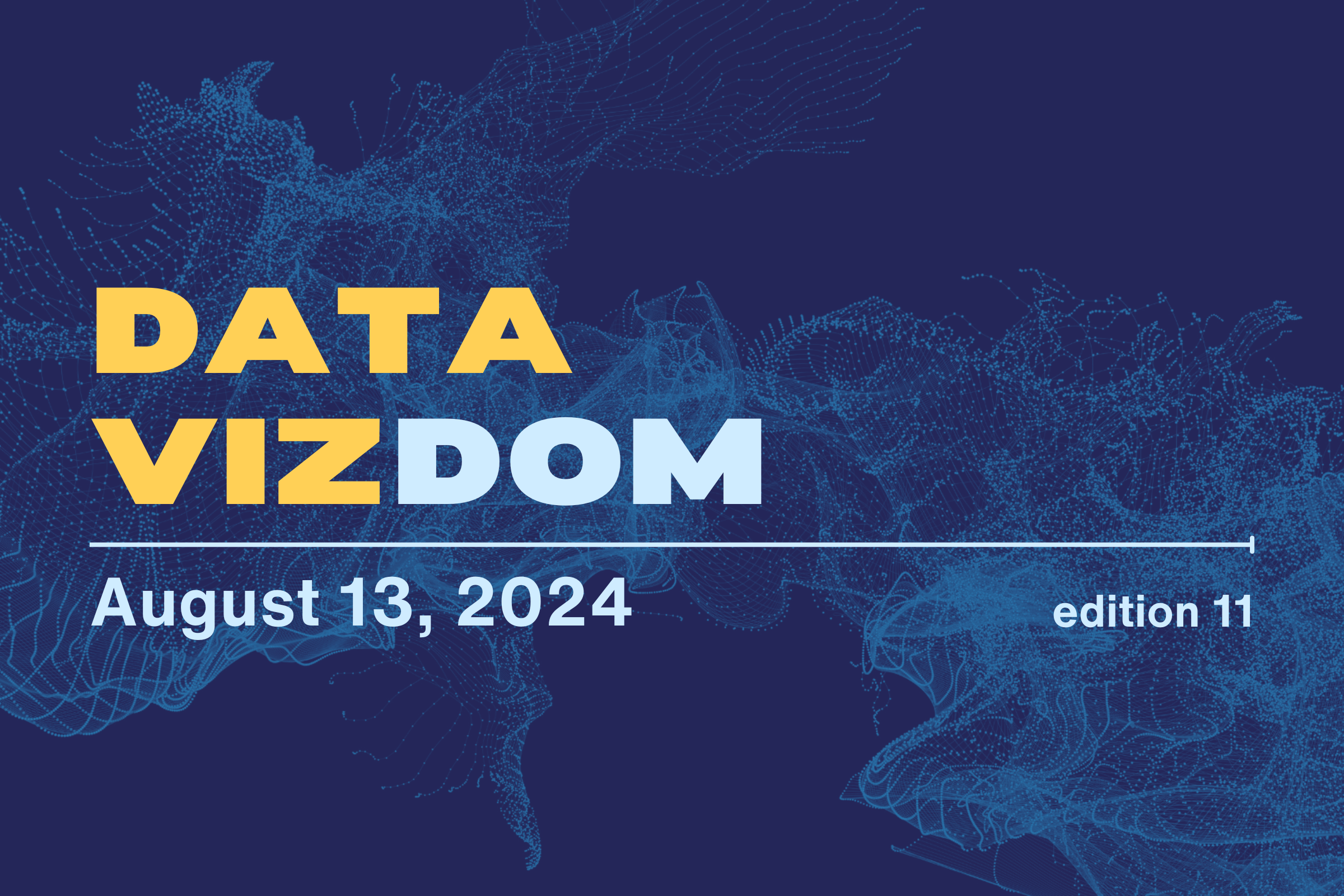What better way to understand concepts big and small than through data visualizations? In this blog series, we curate insightful visuals to provide commentary on events, academic theories and themes related to economics and transportation. Join us as we explore and engage with interesting ideas from around the world.
The rise of social media platforms over the last decade has paved the way for individuals to earn a livelihood by participating in the digital economy. This week’s Data Vizdom shines the spotlight on the creator economy, where creators interact with their audiences and generate revenue by monetizing their content through digital and social media platforms.
The creator economy has been flourishing and expanding in various directions, providing talented individuals with platforms that cater to their unique interests and skills. A study by Goldman Sachs estimates that the size of the creator economy will reach $480 billion by 2027. The infographic below showcases the major platforms that serve different segments of the creator economy, highlighting its breadth. The audience size and potential revenue that creators can generate vary widely between categories and across platforms.
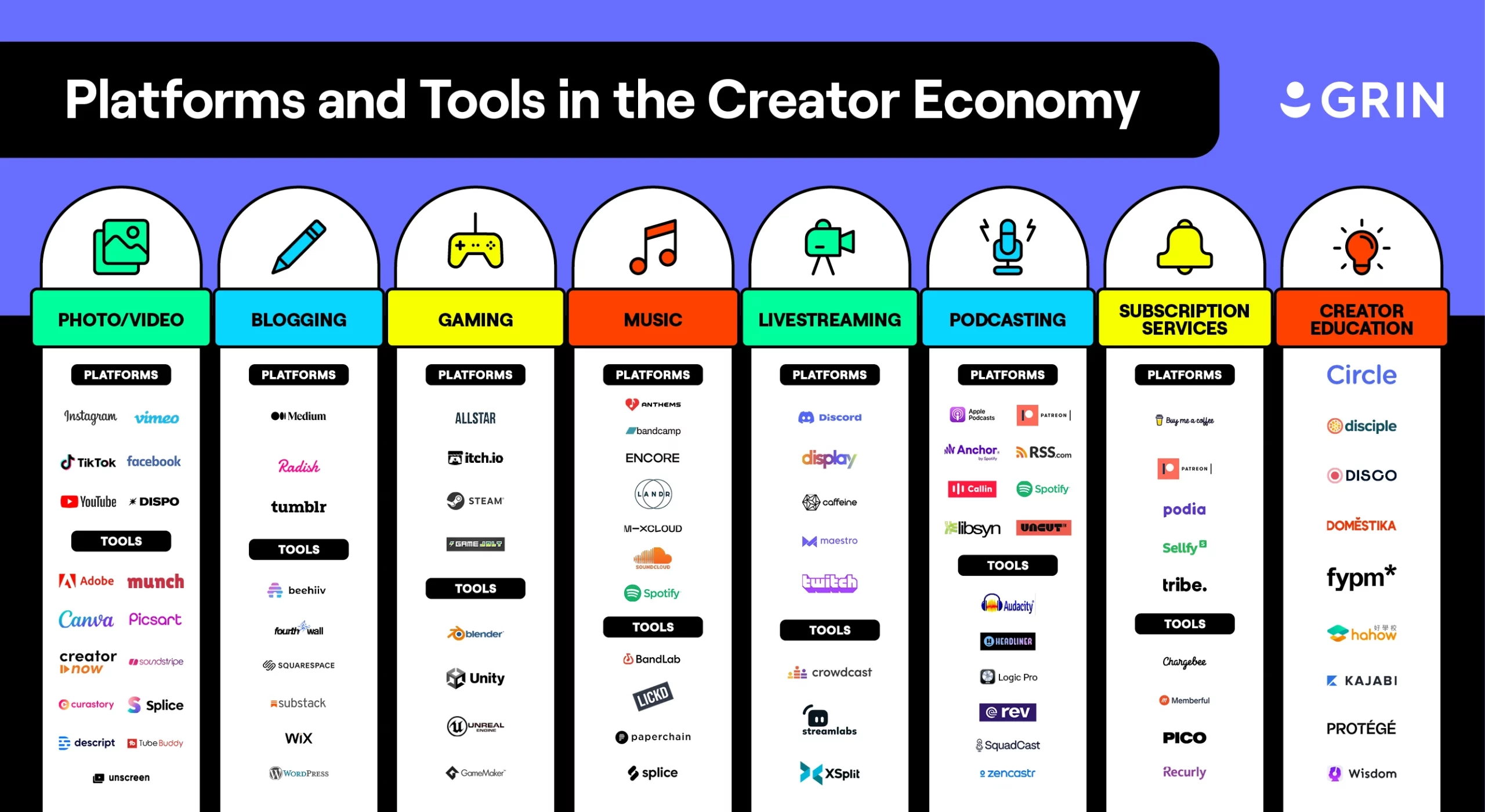
Understanding the Creator Economy – GRIN (April 2024)
While the platforms themselves wield significant power in determining revenue models, revenue shares and the algorithms that decide who gets promoted, things are much more democratic on the creators’ side. Creators producing niche content far outnumber their more popular counterparts. Despite having smaller audiences, their engagement numbers are found to be seven times higher, solidifying their influence over their dedicated followers.

How Your Business Should Tap into the Creator Economy – Harvard Business Review (May 22, 2024)
However, when it comes to earnings, the picture is very different. The largest creators with the biggest audiences tend to earn the most. On Roblox, a gaming platform where creators build experiences for users, traffic is highly concentrated. For example, Brookhaven RP accounts for about 15% of all user engagement on the platform. This trend can also be seen on Patreon, a platform that allows users to support their favourite content creators through recurring subscriptions.
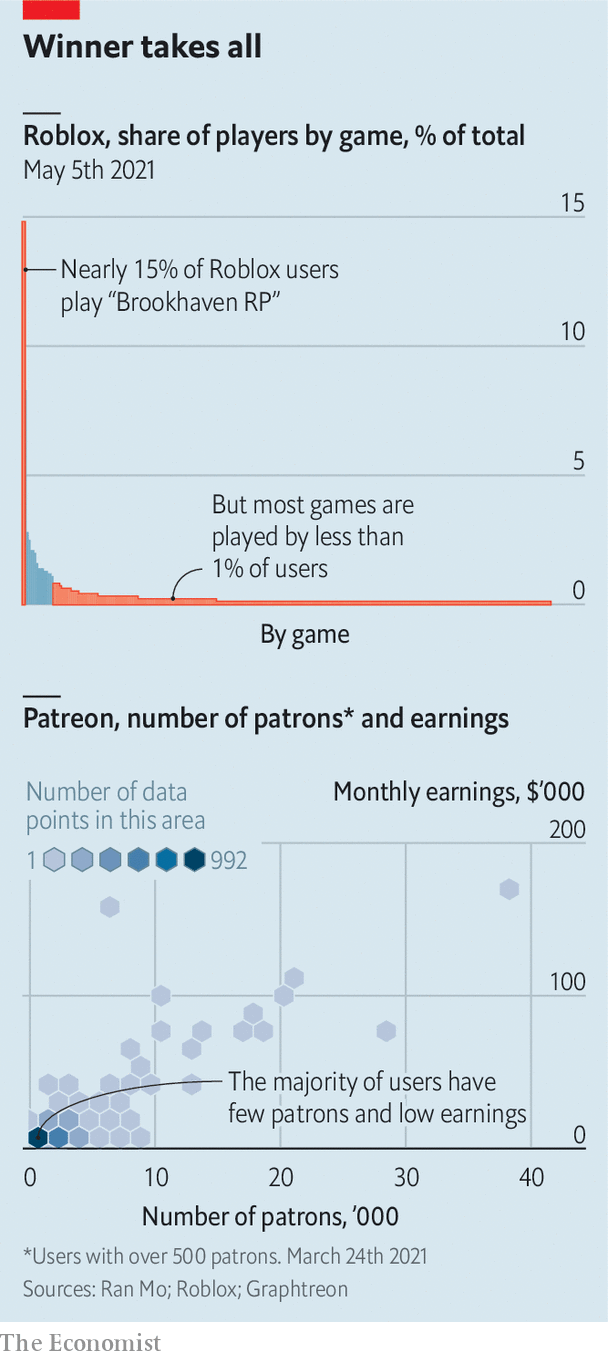
The new rules of the “creator economy” – The Economist (May 8, 2021)
The revenue streams for creators in the creator economy are highly platform-dependent, with sponsored content through brand deals being the most popular mode. The ways through which creators can earn an income have also evolved over time, including selling courses that teach their audience a certain skill or earning tips through features like Super Chat during YouTube livestreams.
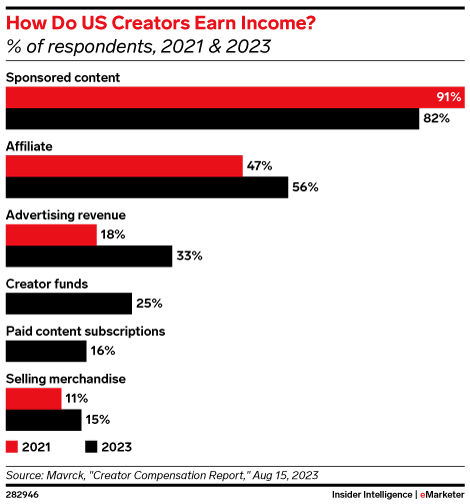
Where does creator income come from? – eMarketer (September 14, 2023)
Sponsoring content has become an important marketing channel for companies, particularly for businesses seeking to reach the dedicated followers of niche content creators. In the US, marketing spend is forecasted to increase across all major photo and video-based platforms in 2024.
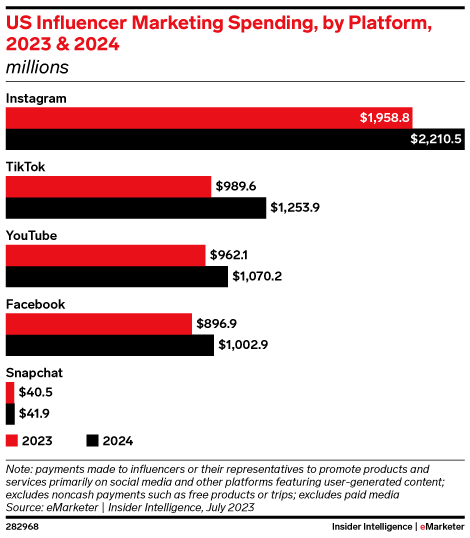
Instagram leads influencer marketing, even as marketers spread budgets across social channels – eMarketer (September 18, 2023)
A study published in the Harvard Business Review analyzed the effectiveness of influencer marketing spending and found that a 1% increase in influencer marketing spend in China, one of the most developed influencer marketing industries, led to a 0.46% increase in engagement. Furthermore, the study documented the effects of seven key variables on optimizing the ROI of such spending, potentially leading to an average increase in engagement of more than 16%.
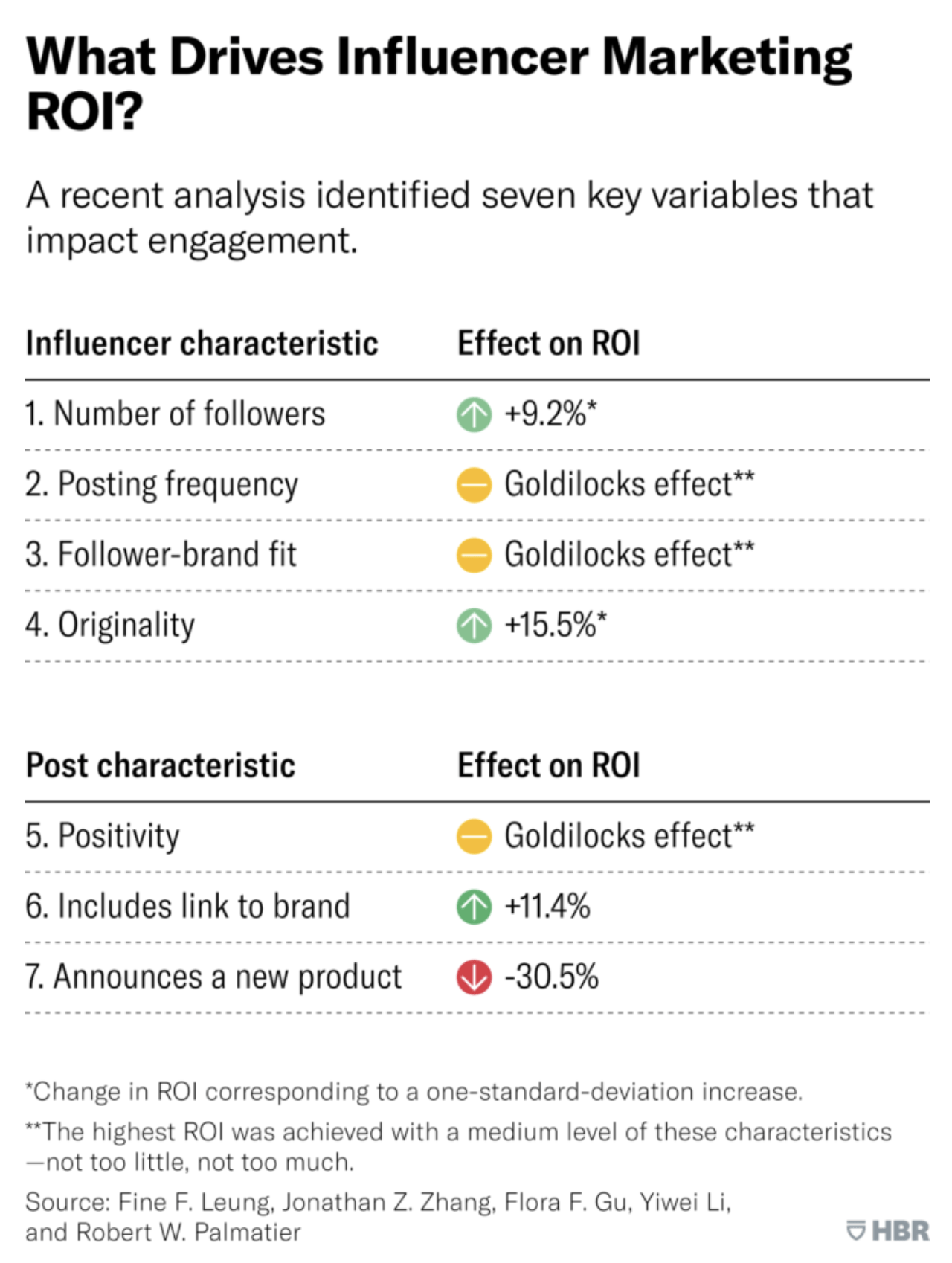
Does Influencer Marketing Really Pay Off? – Harvard Business Review (November 24, 2022)
To conclude, driven by diverse revenue streams and significant engagement from niche content creators, the creator economy is set to continue evolving and thriving. For businesses, understanding trends and leveraging sophisticated marketing strategies will be key to benefiting from the growing influence of this dynamic field.
Help us make this series even better! We would love to hear your thoughts and suggestions on content makers we should follow to discover noteworthy projects and visualizations. Write to Bilal Siddika on LinkedIn or via email.
